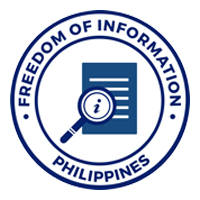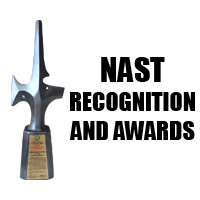Cagayan de Oro, PH—The National Academy of Science and Technology (NAST) in partnership with the Department of Science and Technology (DOST) Region X kicked off the Symposium-Workshop on Developing S&T Innovation Hubs and Clusters in Mindanao last May 22-23, 2017 at the N Hotel, Cagayan De Oro City.
The two-day event was the first in a series of activities under the DOST-supported NAST project on “Supporting the Development of Partnerships in the S&T Innovation Ecosystem”.Attended by more than 120 participants representing different sectors including the industry, academe, civil society, government, and non-government organizations, the two-day symposium aimed to explore how three STI hubs and clusters, both physical and virtual, can be developed corresponding to the three development corridors of Mindanao. The STI hubs are envisioned to provide an innovation ecosystem conducive to creativity and the participation of different stakeholders in translating innovations to actions.Speaking at the Opening Ceremony, Dir. Alfonso Alamban, regional director of DOST X, discussed the role of S&T in Philippine Development. He emphasized the need for a more inclusive and participatory STI to encourage the different sectors of the society. He further highlighted the STI efforts of the current and past administration. Finally, he reiterated the role of DOST and NAST in the advancement of STI in the country.Hon. Oscar Moreno, mayor of Cagayan de Oro City, likewise provided a welcome message. Mayor Moreno began by giving a brief history of CDO. He ended his speech by stressing the role of CDO as a strategic place for a convergence hub and center for STI and education, connecting Misamis and Lanao.
Giving the program overview, National Scientist Lourdes J. Cruz, the project leader, talked about fostering a culture of science and innovation among Filipinos and improving STI ecosystem in the country. She ended her overview with the objectives of the activity, which was to generate proposals for establishing STI hubs in Mindanao.
Dr. Franco G. Teves, director of Research in MSU-IIT talked about “Academic Research at the Nucleus of Sustainable Innovation Ecosystem for Mindanao Development.” He defined and described innovation ecosystem and the role of academic research in the innovation ecosystem stream.
Engr. Danilo Manayaga, president of Secura International Corporation, talked about the “Development of Inclusive Business Model for an Integrated Agri-Business Cluster Anchored on Applied Biotechnology and Precision Farming Technologies.” He highlighted market opportunities, both in domestic and export demands, and matched it with existing resources of the country.
Furthermore, he presented an inclusive business model wherein the participation of stakeholders is an integral part of the business.Mr. Aleem Siddiqui M. Guiapal, executive director of REZA-ARMM, talked about “Programs for Economic Development of ARMM, The Autonomous Region of Muslim Mindanao.” Mr. Guiapal started off with an introduction to ARMM and stated that REZA is “envision[ed] to be a key player in initiating globally competitive and sustainable business environments in generating investments, exports and employment for the accelerated economic growth of Bangsamoro.” He ended his talk by emphasizing some of the investment potentials in ARMM which are in the Agro-based products, Halal Industry and Islamic Banking, Regional and Provincial Ecozones, Maguindanao, Basilan andTawi-Twai Free ports, Retails, Services and Tourism, and lastly, ANGAT-DAPAT (All-iNcusive Gowth Activities Towards Developmet and Poverty AlleviaTion.
Dr. Sukarno D. Tanggol, chancellor of MSU-IIT and Engr. Leonardo Gumalal, senior vice president of CEPALCO, served as reactors on the talks that transpired earlier in the day. In the afternoon session, different technologies were presented by Prof. Lemuel Clark Velasco, Dr. Franco G. Teves, Acd. Guillermo Q. Tabios III, and Acd. Marco Nemesio E. Montaño.Prof. Velasco, the FAB LAB Mindanao Manager, introduced FAB LAB housed at MSU-IIT. He emphasized further that FAB LABS’s journey is CONCEPTION-LAUNCHING-OPERATION.Meanwhile, Dr. Teves presented the technology on Supercritical Fluid (Carbon Dioxide) Extraction used as sample preparation step for analytical purposes or large scale stripping of unwanted material from a product.
Acd. Guillermo Q. Tabios III, hydrology expert and member of the Engineering Sciences and Technology Division of NAST, presented the “Hydrologic and Hydraulic Modelling Studies: Cases of Cagayan de Oro.” Under this, he reviewed the alternative flood mitigation plan of CDO and presented the Pulangi Hydropower Plant IV, Reservoir Sediment Flushing Studies.Acd. Montaño, seaweed expert and member of the Mathematical and Physical Sciences Division of NAST, presented an overview of “Seaweed and Other Marine Products”. Further, he talked about the different uses of cultured seaweed in the Philippines, including medicinal, ecological, and agricultural uses.
At the end of the first day, the participants were divided into 6 transdisciplinary groups. The groups focused on the following clusters: food innovation cluster, agriculture and processing trade cluster, mariculture cluster, energy and water cluster, and biodiversity and conservation cluster.
Starting off the second day was Father Albert E. Alejo, professor at the Ateneo De Manila University, who talked about “The Role of Communities and Indigenous Peoples of Mindanao in Development.” He highlighted that people from Mindanao experience misinterpretations and there are few to no representation at all when it comes to the national level. Furthermore, he emphasized that the projects, programs and activities on STI should be culturally sensitive. He ended his talk with the recommendation of establishment of an Indigenous Leadership Center.ASec. Romeo M. Montenegro, the deputy executive director of MinDA, talked about “The Mindanao 2020 Peace and Development Plan.” In his talk, he stressed that we need S&T to address the challenges and issues that are present in Mindanao.
Dr. Anthony C. Sales, Dir. Dominga D. Mallonga, Timuey Jimid P. Mansayagan, and Dr. Hilly Ann Roa-Quiaoit provided their reactions on some of the talks that happened in the first and second day of the event.
At the end of the workshop, six (6) groups came up with first drafts of capsule proposals for the establishment of STI hubs and clusters in Mindanao. Each group presented their proposals to the resource persons of the activity. The proposals will then be further expanded and refined in consultation with relevant stakeholders in the Mindanao development corridors. The titles of the draft capsule proposals that were submitted were Food Innovation Cluster, Development and Pilot Production of Functional Foods, Strengthening the seaweed cooperative based industry in Northern Mindanao: an eco-friendly coastal livelihood program, Tech-Based Large Scale Assessment of Biodiversity for Management & Conservation, Mindanao Microhydro Innovation Center, and Development of Mindanao Energy Efficient Innovative Technologies Hub thru G.U.T.S. (Generation, Utilization, Transmission and Search).
Recognizing that innovation clusters are cost-effective ways to stimulate transdisciplinary collaboration, growth and economic development, a key strategy of NAST’s project will be in support of the establishment of innovation hubs and clusters in different regions of the country.
Meanwhile, the establishment of STI hubs in Mindanao is seen as a viable strategy to fast track the island's economic development parallel to the growth of a culture of science in the region.











